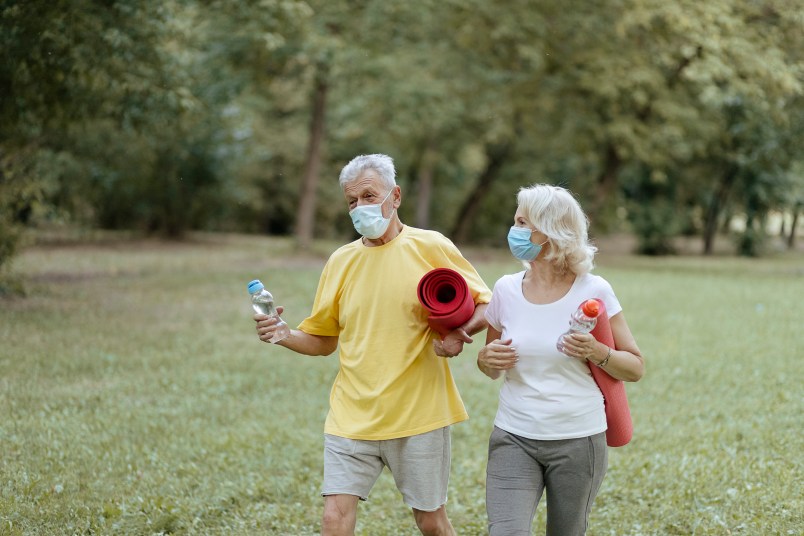When Is It Safe to Exercise After Having Covid-19?

When you’re recovering from an illness or injury, it can be incredibly frustrating to have to simply rest. But taking a break is extremely important when your body is trying to heal. Right now, as many people are in the process of recovering after having covid-19, we’re left wondering when it’s safe to return to exercise and physical activity. Up until now, it’s been impossible to develop general guidelines, as the length and severity of illness varies so much from person to person. But luckily for us, a team of scientists has recently made things more clear.
Strength, Recovery, and Exercise After Covid-19
As we know, covid-19 can affect the body’s cardiorespiratory system, including vital organs like the lungs and heart. Not only that, but some have experienced gastrointestinal and musculoskeletal symptoms like body aches as well. The virus, depending on how severe your case was, could have lasting effects on your body’s strength and conditioning. And so, it’s important that you make sure to ease back into any physical activity with care and caution.
But when it comes to exercise after covid, how much is too much, and when should you start? Researchers from the Hospital for Special Surgery Sports Medicine Institute in New York City aimed to answer these questions, and have published new guidelines for resuming physical activity following recovery from covid. More importantly, they made their determinations based on how the virus affects different bodily systems, and offer advice for returning to physical activity based on which specific symptoms were experienced.
According to the analysis, those who had suffered respiratory (lung-related) symptoms like pneumonia should rest for at least a week after symptoms subside. Then, they should gradually return to physical activity while closely monitoring the quality and rate of their breathing.
Those who had cardiac (heart-related) symptoms such as heart palpitations or tightness in the chest should wait to resume activity for at least two to three weeks from when symptoms subside. Those who experienced heart inflammation should take extreme caution, waiting as much as six months before resuming regular activity.
Those who had hematologic (blood-related) problems like blood clots are advised to begin low-intensity physical activities like short, leisurely walks as soon as they are comfortable, and to limit time spend sedentary, as this could actually reduce blood clotting.
For those who had gastrointestinal or digestive symptoms, it is safe to resume physical activity, easing into it gradually while keeping a close eye on your fluid and calorie intake. Those folks are advised to remain well-hydrated.
For those who had musculoskeletal symptoms like fatigue, pain, and body aches, the researchers suggest waiting until symptoms subside and gradually easing back into physical activity as they feel ready. And lastly, for those with mild to no symptoms, the researchers still advise exercising at about 50 percent of your normal capacity at first, paying attention to your body to monitor whether more severe symptoms, like extreme fatigue, are developing.
So if you had the virus and are ready to get moving, remember that your body is recovering and it’s important to take it easy at first. Allow your body the time it needs to heal, and you’ll be able to get back into your normal routine soon.












